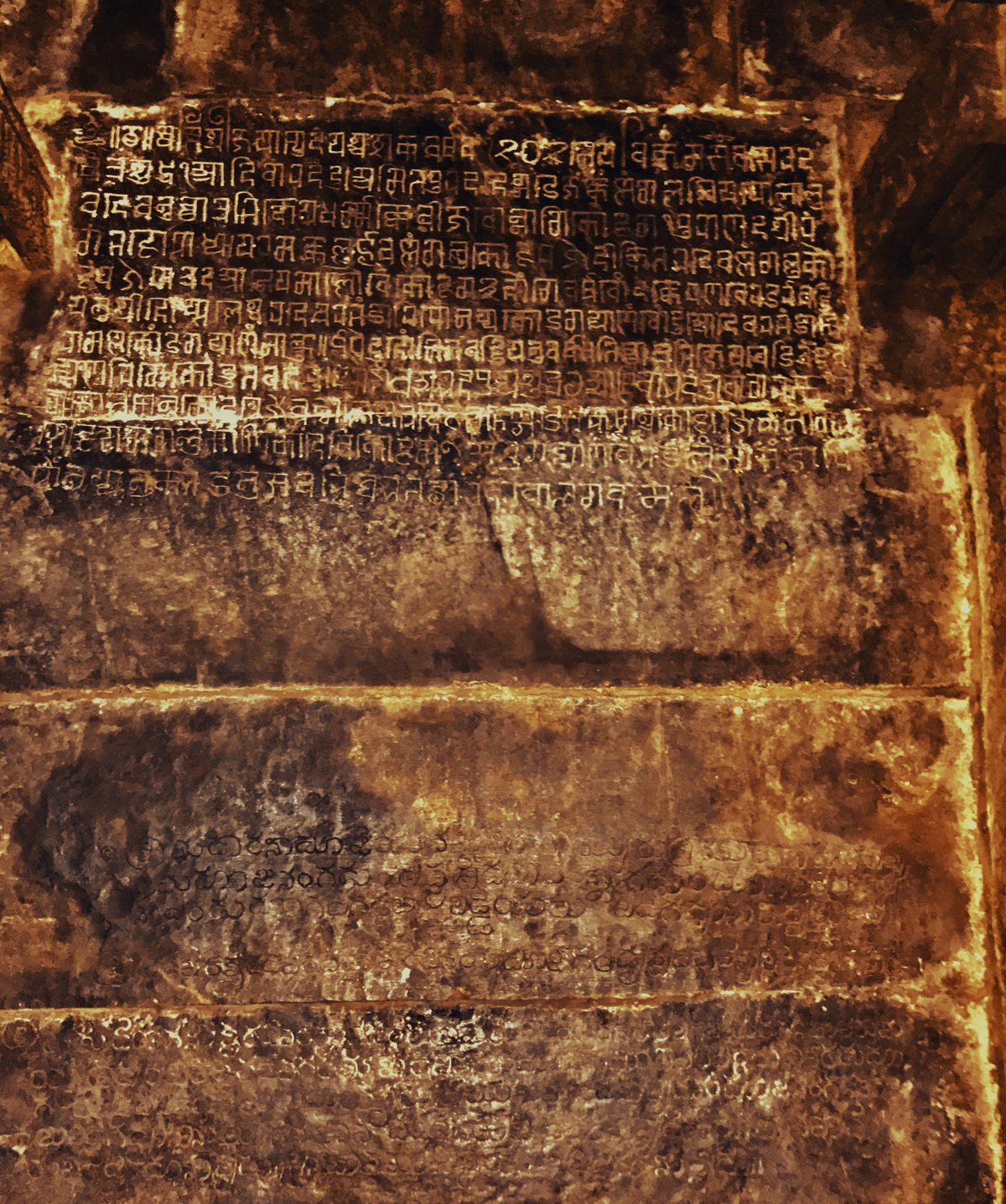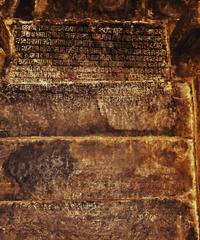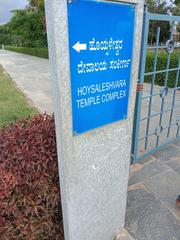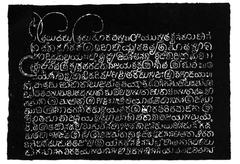
Hoysaleswara Temple Visiting Hours, Tickets, and Belur Historical Sites Guide
Date: 14/06/2025
Introduction
Table of Contents
- Introduction
- Historical Background
- Architectural Highlights
- Visiting Information
- Travel Tips and Accessibility
- Nearby Attractions and Itinerary
- Conservation and UNESCO Status
- Sustainable Tourism and Visitor Management
- Frequently Asked Questions (FAQ)
- Conclusion and Final Tips
- References
Historical Background
Origins and Patronage
The Hoysaleswara Temple was commissioned in 1121 CE by King Vishnuvardhana of the Hoysala dynasty. The temple is named after the king, who sought to commemorate his military victories and consolidate his legacy. While royal patronage played a central role, local Shaiva citizens also contributed to its construction, reflecting the wealth and religious diversity of Dwarasamudra (now Halebidu).
Hoysala Dynasty and Dwarasamudra
The Hoysala Empire, flourishing from the 10th to 14th centuries, was instrumental in shaping South Indian art and architecture. Dwarasamudra served as its capital and cultural heart. Alongside the Hoysaleswara Temple, the Chennakesava Temple at Belur and the Keshava Temple at Somanathapura form the celebrated “Sacred Ensembles of the Hoysalas,” recognized by UNESCO for their universal value.
Religious and Cultural Significance
Though primarily a Shaiva temple, Hoysaleswara features iconography from Vaishnavism, Shaktism, and Jainism. This syncretism embodies the religious tolerance and vibrant cultural milieu of the Hoysala era. The temple was not only a site for worship but also a hub for the arts, literature, and scholarly pursuits.
Invasions, Decline, and Restoration
Invasions by the Delhi Sultanate in the early 14th century resulted in the plundering and partial destruction of the temple. Despite this, much of its art and structure survived. Restoration efforts by the Archaeological Survey of India (ASI) since the 19th century have preserved its grandeur for future generations.
Architectural Highlights
Star-Shaped Platform and Plan
The temple stands on a distinctive star-shaped platform (jagati), a hallmark of Hoysala architecture. This design allows for circumambulation and showcases the temple’s elaborate exterior reliefs (Tripoto).
Sculptural Brilliance
Carved from chloritic schist (soapstone), the temple’s walls are adorned with hundreds of finely detailed friezes and figures. These include:
- Epic scenes from the Ramayana, Mahabharata, and Bhagavata Purana.
- Bands of elephants, lions, horses, celestial maidens (madanikas), and mythological creatures (HinduCultureHub).
- Twin Nandi pavilions, each housing a monolithic bull.
Structural Features
- Twin sanctums (dvikuta) for Hoysaleswara and Shantaleswara.
- Intricately carved lathe-turned pillars and ornate ceilings.
- Absence of original vimanas (towers), lost to historical damage but compensated by the temple’s sculptural richness.
Visiting Information
Visiting Hours
- Open Daily: 9:00 AM – 5:30 PM (Some sources mention opening as early as 7:30 AM; confirm locally during festivals or peak seasons.)
- Best Time: Early mornings and late afternoons for optimal light and minimal crowds.
Tickets and Entry Fees
- Indian Citizens: INR 40
- Foreign Tourists: INR 600
- Children (Below 15 Years): Free
- Tickets are available at the onsite counter or can be booked online via the official ASI portal.
Guided Tours
Government-approved guides are available at the entrance for INR 125–250. Tours provide valuable context on the temple’s history, iconography, and architecture.
Photography
Photography is permitted in most areas, but restrictions apply within sanctified zones. Flash and tripods may be limited; check signage on-site.
Travel Tips and Accessibility
How to Get There
- By Road: Halebidu is 30 km from Hassan, 220 km from Bangalore, and 170 km from Mangalore. Regular buses and taxis are available (xplro.com).
- By Rail: Nearest station is Hassan (40 km). From there, take a bus or taxi (tourtravelworld.com).
- By Air: Mangalore International Airport (168 km) is the closest, with onward road transport available.
Local Transport
Auto-rickshaws and cycle-rickshaws are common for short distances. Exploring on foot is recommended to appreciate the temple’s details.
Accessibility
The temple is partially accessible for differently-abled visitors, with ramps at some entrances. However, the raised platform and stone pathways may pose challenges; assistance is available on request.
Nearby Attractions and Recommended Itinerary
- Chennakesava Temple, Belur: 16 km away; a masterpiece of Hoysala art.
- Kedareshwara Temple & Jain Basadis: Other significant monuments in Halebidu.
- Archaeological Museum: Located nearby, showcasing Hoysala sculptures.
- Combined Tours: Halebidu and Belur are often visited together in a single day (tusktravel.com).
Allocate 2–3 hours for Hoysaleswara Temple, and consider a full day for both Halebidu and Belur’s sites.
Conservation and UNESCO Status
Preservation Efforts
The Archaeological Survey of India (ASI) leads the ongoing conservation of the temple, focusing on structural stabilization, cleaning, and restoration of carvings. The Deccan Heritage Foundation and local organizations support research, documentation, and community engagement (Deccan Heritage Foundation).
UNESCO Recognition
Inscribed as part of the “Sacred Ensembles of the Hoysalas” in 2023, the temple is internationally recognized for its artistic and cultural value. UNESCO status brings obligations for enhanced protection, visitor management, and sustainable tourism (Star of Mysore).
Challenges
Conservation faces challenges from weathering, biological growth, and increased tourist traffic. Measures include restricted access to fragile zones, designated pathways, and educational signage (Culture and Heritage).
Sustainable Tourism and Visitor Management
Authorities balance tourism growth with heritage protection by:
- Limiting visitor numbers in sensitive areas
- Providing trained guides and interpretive materials
- Encouraging responsible visitor conduct
Training programs for local artisans and staff help preserve traditional skills and foster community stewardship (Drishti IAS).
Frequently Asked Questions (FAQ)
Q: What are the Hoysaleswara Temple visiting hours?
A: 9:00 AM to 5:30 PM daily (verify locally during festivals).
Q: How much is the entry fee?
A: INR 40 for Indian citizens, INR 600 for foreign nationals, free for children under 15.
Q: Are guided tours available?
A: Yes, at the entrance for INR 125–250.
Q: Is photography allowed?
A: Permitted in most areas; avoid flash and tripods inside sanctified zones.
Q: How accessible is the temple?
A: Partially accessible; ramps at some entrances, but stone steps may limit wheelchair access.
Q: What is the best time to visit?
A: October to March, especially during early mornings or late afternoons.
Q: Can I combine Halebidu with other sites?
A: Yes, Belur and Somanathapura are popular nearby destinations.
Conclusion and Final Tips
The Hoysaleswara Temple at Halebidu is a living testament to the artistic, religious, and architectural genius of the Hoysala Empire. Its intricate carvings, star-shaped platform, and syncretic iconography invite visitors into a world where stone tells stories of devotion and creativity. Thanks to sustained conservation and its status as a UNESCO World Heritage Site, the temple remains accessible for generations to come.
Visitor Tips:
- Check current visiting hours and ticketing details before your visit.
- Dress modestly and remove footwear before entering.
- Engage a guide for deeper insight.
- Respect signage and restricted areas to help preserve the monument.
- Explore nearby sites for a comprehensive experience of Karnataka’s Hoysala heritage.



